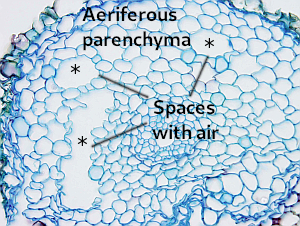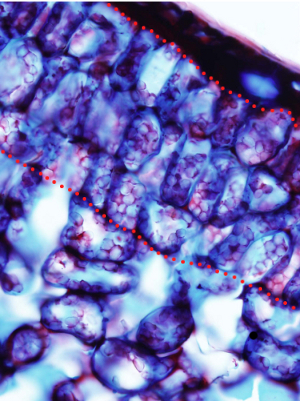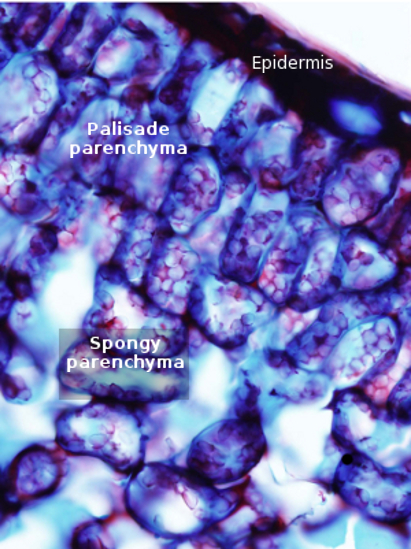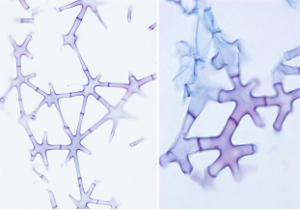|
These are the answers to the quiz.
|
1) The mature parenchyma cell can dedifferentiate and proliferate.
|
| Not answered. It is true. Parenchyma cells can dedifferentiate and become a meristematic cell. |
2) Parenchyma cells have a middle lamella and a primary cell wall in their cell walls.
|
| Not answered. It is true. Parenchyma cells can regain meristematic activity, which would be impossible if there were a secondary wall. |
3) In the leaf mesophyll, parenchyma cells do not leave much intercellular space.
|
| Not answered. It is false. The spongy parenchyma is found in the mesophyll of most leaves. This type of parenchyma is characterized by large intercellular spaces. |
4) Shadow leaves show a palisade parenchyma with more parenchyma cell layers than those leaves under direct sunlight.
|
| Not answered. It is false. Sun leaves are smaller and thicker than shadow leaves since they have a well-developed palisade parenchyma. |
5) Storing parenchyma cells may contain particulate and dissolved substances stored in their cytoplasm.
|
| Not answered. It is true. |
6) Photosynthetic parenchyma is found in the aerial parts of the plant body.
|
| Not answered. It is true. The photosynthetic parenchyma is found in those areas reached by sunlight. |
7) In aquatic plants, there are large intercellular spaces in the parenchyma filled with water.
|
| Not answered. It is false. Plants die if they get filled with water in the intercellular spaces of the parenchyma. Aquatic plants develop the aeripherous parenchyma, which is a type of parenchyma with large intercellular spaces filled with air. |
8) In xerophyte plants, water is stored in large vacuoles.
|
| Not answered. It is true. |
9) The parenchyma tissue is distributed in reduced areas of the body plant, such as the bark, and some cells in the xylem and phloem.
|
| Not answered. It is false. Parenchyma is widely distributed in the plant body. It is found in the cortex of roots and stems, in the medulla of stems, and in leaves, fruits, and seeds. Parenchymatic cells are also part of the xylem and phloem. |
10) Parenchyma tissue can be used to generate new plant clones.
|
| Two options cannot be selected. It is true. Since parenchyma cells can become meristematic cells, they can generate a complete new plant by proliferation and differentiation. |
|
|
Click the images to enlarge
|
F-1) Asterisks indicate the empty intercellular spaces of the stem aeriferous parenchyma.

|
Not answered. It is true.
 |
F-2) The parenchyma delimited by dots is palisade parenchyma.

|
Not answered. It is true.
 |
F-3) This is aeriferous parenchyma.

|
Not answered. It is true. The large intercellular spaces are filled with air.
 |
F-4) The arrows point to starch depots that are located in amyloplasts.

|
Not answered. It is true. The starch is concentrated into amyloplasts, which are stained in a darker color.
 |







